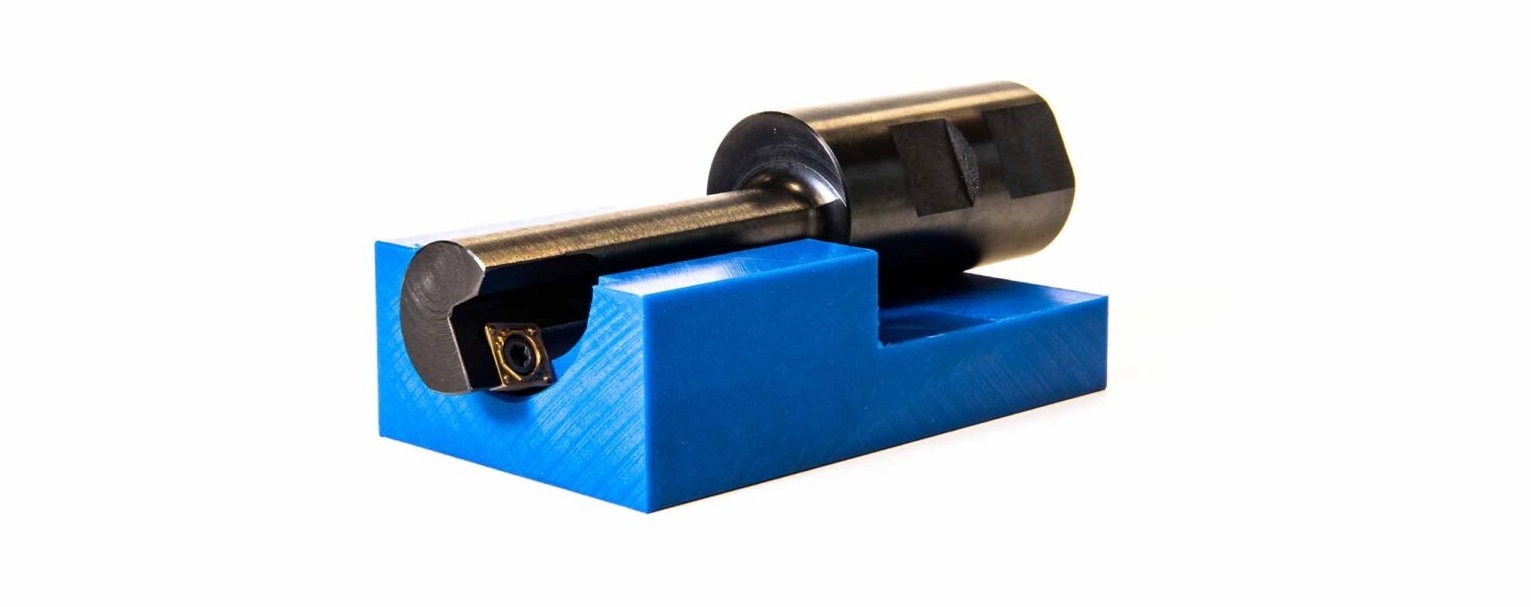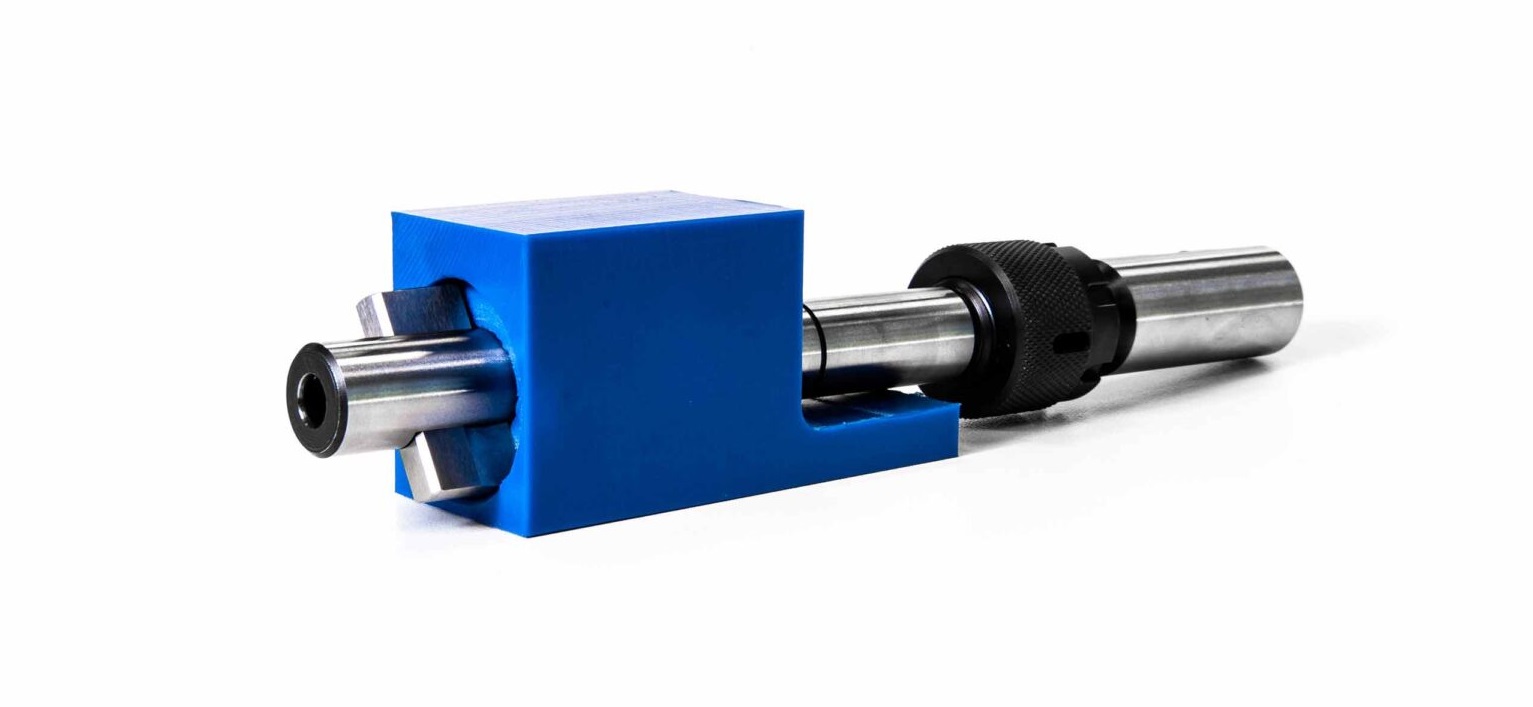Back spotfacing is a calibrated facing process performed around a hole. This is a “pulling” machining, so the spindle of the machine tool moves away from the piece during the work phase. The resulting surface is generally used as a flat contact surface for a washer. The orthogonality of the counterbore with the hole guarantees maximum tightness of the screw pressing the washer.
Back spotfacing cannot be always performed with the same strategy. In fact, it is necessary to choose the most suitable tool according to the ratio between the diameter of the hole and its length.
For holes whose maximum length is three times the diameter (3xD) and whose counterbore is less than twice the diameter of the hole, you can use eccentric back spotfacing counterbore. Instead, when the spotfacing is more than twice the diameter of the hole or the length of the hole is bigger than 3xD, you must use back spotfacing counterbore with interchangeable blades.

Eccentric back spotfacing counterbore
This type of tool allows you to enter a hole from the front and perform a facing machining with a calibrated diameter on the opposite face of the piece. The tool is single-edged and can be in solid carbide or mechanically fixed.
To use an eccentric counterbore, a CNC machine is recommended as it simplifies the centering operations on the hole.
- As a preparatory step, the cutting edge must be oriented to zero (spindle orientation = 0).
- Then the tool must be moved to the left by the distance calculated as: counterbore diameter minus hole diameter divided by two. This will allow the cutting edge of the tool to line up with the hole.
- It is now possible to enter the hole vertically until it passes the back face of the piece with the cutting edge.
- Now you can bring the spindle into axis with the hole and activate the clockwise rotation of the spindle M3 and activate the coolant M8.
- Now perform the back-grinding by advancing the cutting edge towards the workpiece to the desired size.
- Once the machining is finished, disengage the tool and orient the spindle to the zero position.
- To exit the hole, you have to go left to the same position used in the entry phase.
For this type of tools Gaspari Utensili has developed a catalog of special products obtained from semi-finished products ready in stock. This allows you to request a special eccentric back spotfacing counterbore, specific for your counterbore, with reduced delivery times. You can find the corresponding catalog in the download section of the site.

Interchangeable blades counterbore
This type of tool can be used on both CNC and manually operated machines. The processing requires the operator to act manually in assembling and disassembling the blade from the support. The arbor in fact consists of a cylindrical shaft at the end of which there is a rectangular slot, inside which the blade is located. The cutting blade, generally made of HSS, is mounted once the shaft has come out of the hole to be machined. The blade is locked in its centering seat by means of a threaded ring nut. Now the operator can start the spindle and counterbore the piece. After machining, the blade must be removed from the support before the arbor is pulled put of the hole.
This type of tool has no length limits, as the shaft can be guided into the hole by a guide bush. It is a strategy often used in the machining of large counterbores due to the low cost of this technology.
For this type of tools Gaspari Utensili has developed a catalog of special products obtained from semi-finished products ready in stock. This allows you to request a special counterbore with interchangeable blades, specific for your counterboring work, with reduced delivery times. You can find the corresponding catalog in the download section of the site.
